U.S. Hospitals and Health Systems Enhance Patient Safety
Hospitals and health systems across the nation are implementing effective, innovative programs to create a culture of safety, improve staff well-being and connect with their communities.
Learn more about innovative programming in your state and check back as we continue to add more examples of this high-quality care throughout 2025.
These stories are part of the AHA Patient Safety Initiative, a collaborative, data-driven effort that encourages engagement in patient safety and public trust in hospitals and health systems.
Alabama

Children's of Alabama
Quest for Zero/Solutions for Patient Safety Collaborative
Through its own patient safety initiatives, Children’s of Alabama supports the national goals of the Solutions for Patient Safety Collaborative, a group of children’s hospitals working together to help each other reach zero harm. Children’s Quality Improvement Committee focuses on addressing hospital-acquired conditions through training videos and other tools. Their work helps strengthen safety by reducing surgical site infections, pressure injuries, falls, sepsis and adverse drug events among other things.

Crestwood Medical Center
Nurses Improving Care for Healthsystem Elders (NICHE)
To improve geriatric care, Crestwood Medical Center launched the Nurses Improving Care for Healthsystem Elders (NICHE) program, which addresses clinical issues such as falls, pain, skin breakdown and wounds, use of advance directives and family involvement in decision-making. Additionally, NICHE aims to make the physical and social environment friendlier to older adult patients. Crestwood Medical Center has implemented steps to recognize and address the unique needs of elderly patients with the support of a core group of geriatric resource nurses who have received additional education and training specific to geriatric nursing.
Arizona
Valleywise Health
Bicycle Helmet Screening and Distribution in the ER: An Injury Prevention Program
Protecting children from serious injury is paramount. Through a state safety grant, Valleywise received funds to purchase bicycle helmets to distribute at community events focusing on health and safety. To protect young Arizonans, staff distributed helmets at no cost to families at community and school events and Valleywise Comprehensive Health Centers and Family Resource Centers. Through this program, Valleywise offers a proactive health measure aimed at preventing head injuries. In light of serious injuries from bicycle accidents, including a significant number of pediatric patients arriving in the emergency department, Valleywise educated children and their families about preventing injuries and riding safely.
Arkansas
NEA Baptist Memorial Hospital
C-diff Task Force Committee
NEA Baptist Memorial established the C-diff Task Force Committee aiming to eliminate the spread of C-diff, a common bacterial infection that can be acquired in a hospital. The committee developed and implemented various strategies to reduce C-diff, including reducing hospital-acquired infections, evaluating patient care processes and systems-based practices, and optimizing utilization of health care resources. For its efforts, the C-diff Task Force Committee was awarded the Baptist President’s Quality Award.
California

Children's Hospital Los Angeles
Southern California’s First Aerodigestive Program
Aerodigestive disorders affect the airways or upper and lower respiratory tracts. In response, Children’s Hospital Los Angeles launched a pediatric Aerodigestive Program specifically designed to address children’s ability to breathe, swallow and eat. As a subspecialty of its nationally ranked Pulmonology and Sleep Medicine and Gastroenterology, Nutrition and Hepatology services, the program developed effective ways to better serve pediatric patients. Successful strategies used in this program include a collaborative team approach, comprehensive diagnostic testing, specialized clinics and an expert care team including nutritionists as well as digestive, respiratory and breathing specialists.
Colorado
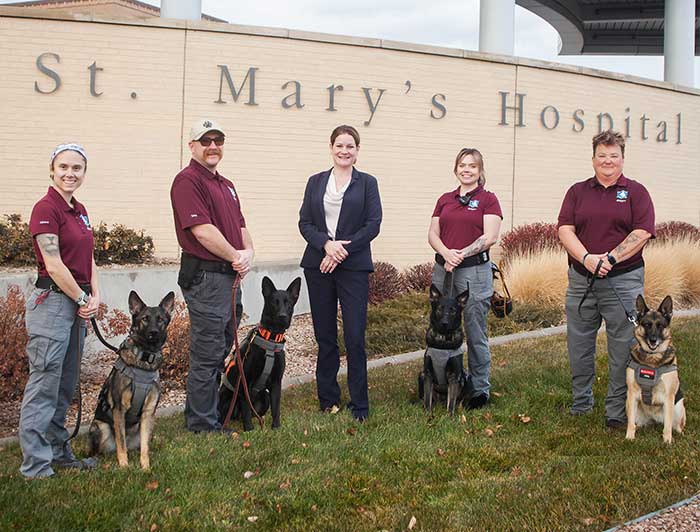
Intermountain Health St. Mary's Regional Hospital
Culture of Care & K-9 Program
Intermountain Health St. Mary’s Regional Hospital created a #CultureofCare campaign to combat a rise in verbal and physical workplace violence incidences directed against health care workers. The #CultureofCare campaign aims to make sure everyone knows abuse will not be permitted and staff will be supported when it does occur. The #CultureofCare programs seek to ensure health care workers’ safety through education, training and system enhancements, including an innovative K-9 program at St. Mary’s Regional Hospital in Colorado. The dogs are trained to protect in life-threatening situations and to provide comfort and emotional support for employees, patients, family and visitors.

Denver Health
Resilience and Equity through Support and Training for Organizational Renewal (RESTORE) Program
Employee well-being influences the quality of patient care and the ability of hospitals to recruit and retain high quality staff, so Denver Health dedicated resources toward improving employees’ mental well-being and reducing employee burnout. The Resilience and Equity through Support and Training for Organizational Renewal (RESTORE) program was designed to promote and sustain the mental well-being of the workforce; support individual, collective and organizational resilience through timely and confidential peer-delivered emotional support and psychological first aid; and provide trauma and resilience-informed education and training. Since the program launched in 2020, it has supported more than 519,000 touches and more than 16,500 encounters or activations for psychological first aid and emotional support. More than 4,500 individuals have participated in RESTORE.
Connecticut
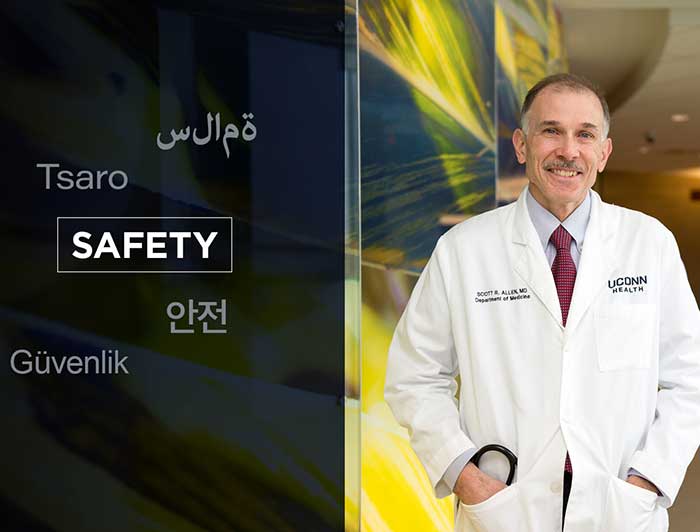
UConn Health
Culture of Safety Where We Put the Patient First
UConn Health has embraced a culture of safety to create a positive environment for patients and staff. The hospital encourages CHAMP behaviors: Communicate Clearly, Handoff Effectively, pay Attention to Detail, Mentor and Coach Others, and Practice and Accept a Questioning Attitude. UConn Health also encourages employees to embrace the STAR approach – Stop-Think-Act-Review – to take a short, mini-mental timeout before proceeding with a specific task to ensure it is the appropriate step. UConn also holds morning safety huddles designed to focus staff attention on safety in the hospital. It supports an error analysis program encouraging collaboration between the quality team and frontline staff to focus on ways to improve their system of care.
Delaware
Bayhealth
Mobile Care Clinic
In 2023, Bayhealth launched a rolling clinic in a 38-foot medical recreational vehicle (RV) to help improve patient access to health care throughout central and southern Delaware. Bayhealth Mobile Care provides care to underserved and hard-to-reach communities throughout the state. The rolling clinic offers blood pressure checks, health education, health screenings and vaccinations. Bayhealth Mobile Care also enables Bayhealth to offer on-site occupational health services including hearing tests, physical exams, laboratory work and electrocardiograms.
ChristianaCare
School-Based Health Centers
To encourage a lifelong path of wellness, ChristianaCare supports school-based health centers in Delaware’s elementary schools. Each school-based health center includes a health care team of medical, mental health, community health and nutrition experts. In addition to the School-Based Health Center, students are connected to the full ChristianaCare system of care. These wrap-around services are most effective in engaging students and creating positive health outcomes.
Florida
Advent Health Lake Placid
“Speak Up” Program
Patients at Advent Health Lake Placid and throughout all of Advent Health’s 55 acute care hospitals are encouraged to play an active role in their safety through the “Speak Up” Program. This program gives patients the opportunity to share their comments, suggestions and concerns about safety and quality of care via SHARE cards available throughout each hospital. It offers patients other actionable tips such as paying attention to the care you receive, educating yourself about tests being conducted as well as your diagnosis and treatment plan, asking a trusted friend or family member to be your health care advocate, knowing your lab results and medications, and using medical centers that have met rigorous safety standards.
BayCare Health System
FirstFocus
BayCare prioritizes safety first across the health system. It implemented and standardized FirstFocus meetings in all divisions of all facilities to review reported patient safety events, identify risks, assign improvement activities, share lessons learned, and spread effective changes throughout the organization. By forming a multidisciplinary cross-divisional First Focus Sprint Group to develop optimization recommendations and then share those recommendations across the safety chain of committees, including senior and executive leadership, BayCare has achieved strong buy-in and awareness across its system.
Georgia
Coffee Regional Medical Center
Electronic Medication Reconciliation Improvement Process
An important part of patient safety is reducing the risk of medical errors – and Coffee Regional Medical Center is achieving that through its Electronic Medication Reconciliation Improvement Process. This 98-bed hospital has implemented an advanced medication distribution system which includes a robotic pharmacy where patient barcodes are matched to prescription barcodes. This confirms that the right medications are delivered to the right patient, helping to improve patient safety and medical outcomes.
Illinois
FHN Memorial Hospital
Post-birth Alert Orange Bracelet Program
FHN Memorial Hospital is prioritizing postpartum patient safety. Women in the first six to twelve weeks after delivering a baby are at higher risk of dying from pregnancy and birth-related complications such as blood clots or sepsis. To address this, each postpartum patient is given an orange wristband at discharge to serve as an alert. The bands are worn until the mother’s postpartum appointment with their provider. Additionally, if a post-partum patient has a medical emergency and is not able to communicate, the bracelet informs providers and emergency personnel of her postpartum status. Thanks to these alerts, FHN has increased the percentage of time when patients are triaged by a nurse within 10 minutes from 39% to 58%.
Indiana

Hendricks Regional Health
Fall Prevention Program
Falls are a leading cause of injury in hospitalized patients. Hendricks Regional Health has a patient-centric falls prevention program that provides all patients with the individual support they need to ambulate safely. The program assesses an individual’s fall risk, determines the safest way to assist a patient during ambulation and repositioning in bed, and offers an individualized patient safety tool sharing safe ambulation information among appropriate staff.
Iowa
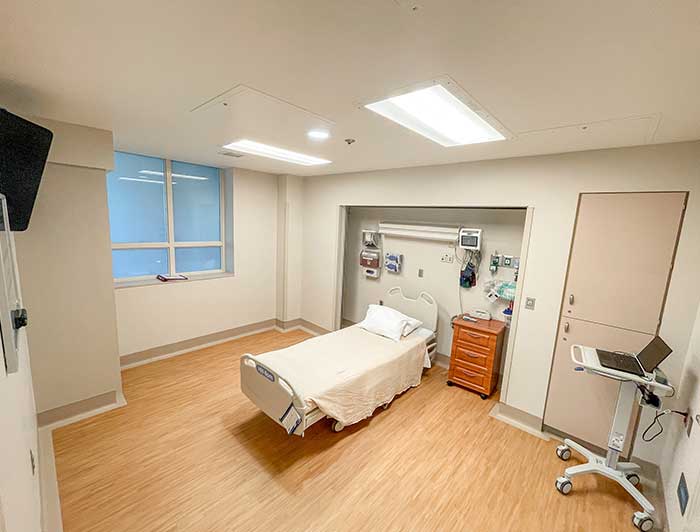
Boone County Hospital
Safer Room
Boone County Hospital opened a Safer Room in their Medical/Surgical Unit to keep patients in mental health crises safe. This room is specifically designed with specialized doors and secure medication storage to ensure the safety of both patients and staff while delivering essential medical and mental health care.
Kansas
The University of Kansas Health System
Equitable Colorectal Screening
The University of Kansas Health System is helping close gaps in colorectal cancer screening. Through a partnership with other local providers, KU helps provide low-cost to no-cost fecal immunochemical test kits, and when needed, follow-up CT colonography and colonoscopies. Through a public-private partnership, the Health Partnership Clinic has developed innovative strategies to increase access to care and increase screening rates in their underserved patient population.
Kentucky
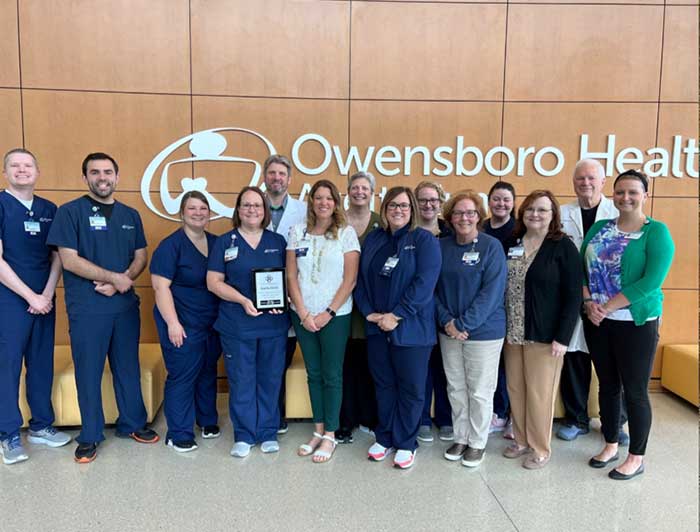
Owensboro Health Regional Hospital
Infection Prevention Initiative
Owensboro’s Infection Prevention Initiative team implemented a “no flash rule” to ensure better sterilization of surgical tools and instruments throughout the hospital. The hospital’s electronic medical record system is included in the project to assist with the scheduling process and to optimize the use of sterile instruments needed for surgical procedures. In four years, they have seen a 50.76% reduction in Class 2 surgical site infections.
Maine
Northern Light Health Eastern Maine Medical Center
Caring for Safety
Northern Light Health Eastern Maine Medical Center programs highlight the hospital’s dedication to fostering a culture of safety and unity within the medical center and the broader community. It uses metal detectors and has at least 10 security officers on duty 24-7 who participate in ongoing training to recognize, reduce and manage violent and aggressive behavior while supporting emergency response for patients and staff. Staff members wear badges that can alert security and response teams in real-time. Additionally, all staff members are encouraged to speak up at any time about safety concerns and are empowered to call a Safety Stop to pause activities and escalate concerns in real time.
Maryland
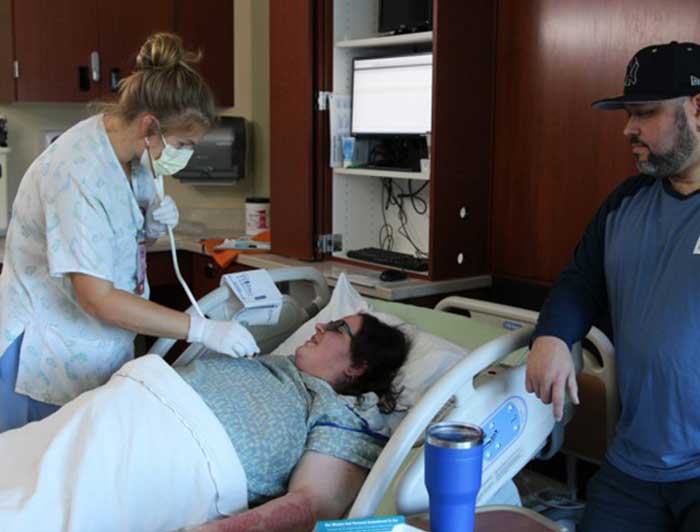
Meritus Health
Team STEPPS Program
Meritus Health has created a patient safety environment built on trust, fairness, and community. Through the Team STEPPS program, Meritus Health focuses on Communication, Situation Monitoring, Leading Teams, and Mutual Support to create a culture of safety at every level – from patients and families to care members and support staff. The Team STEPPS program, which is strengthened by other Meritus safety culture programs including increased security and teamwork, has resulted in a 10.7% decrease in care quality concerns and 21% drop in preventable harm events.
Johns Hopkins Medical
Communication and Resolution Program
The team at Johns Hopkins Medical understands the importance of communication in ensuring patient safety. They created a Communication and Resolution Program (CRP) which promises consistent, open and honest communication between health care providers, patients and patients’ family members.
Massachusetts
Emerson Health
Equity Informed High Reliability
Emerson Health is invested in creating a culture of reliability and trains all members of the board, senior leaders, and heads of the medical staff on Equity Informed High Reliability. Front line staff and patient and family input is included in all event evaluations to enhance risk perception and build safer systems. Safety reporting tripled the first year of the program and grew by another 25% the second year.
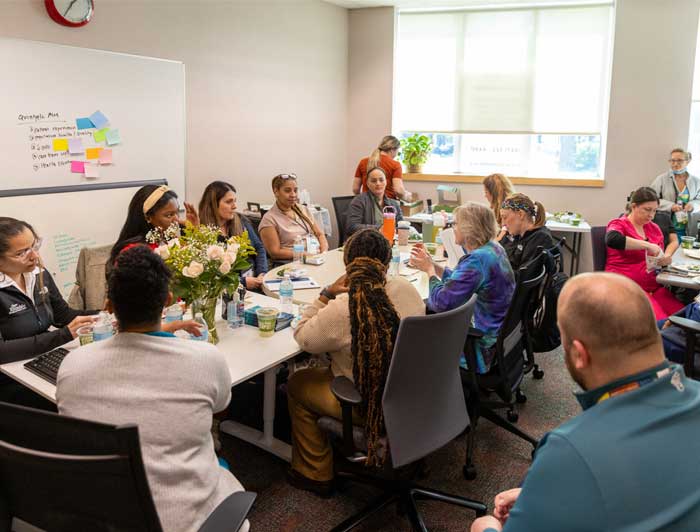
Boston Medical Center
Daily Safety Huddle
Boston Medical Center’s daily safety huddle is a cornerstone of our commitment to patient safety and operational excellence, bringing together leaders from 50 hospital areas to collaborate in real-time. With >95% consistent participation, this seven-day-a-week forum ensures rapid issue resolution, fosters teamwork, and enhances communication, with nearly 100 attendees on weekdays and daily email summaries reaching 400 leaders. By reviewing safety events from the past 24 hours and anticipating potential challenges for the next 24, our huddle drives continuous improvement and proactive problem-solving across the hospital. In 2024, more than 6,900 safety and operational issues were raised at the huddle and 87% were resolved within one day.
Michigan
Corewell Health
Quality, Safety and Experience Department
Corewell Health realizes the reality facing health care today - increasing complexity in operations and ever-higher targets for patient experience, safety and quality. They are pursuing a wide range of initiatives to improve the resilience of their systems and processes, with a special focus on patient care through their Quality, Safety and Experience Department. Corewell offers quality report cards for specific conditions and procedures to empower patients to make informed choices for the personalized care they seek.
Missouri
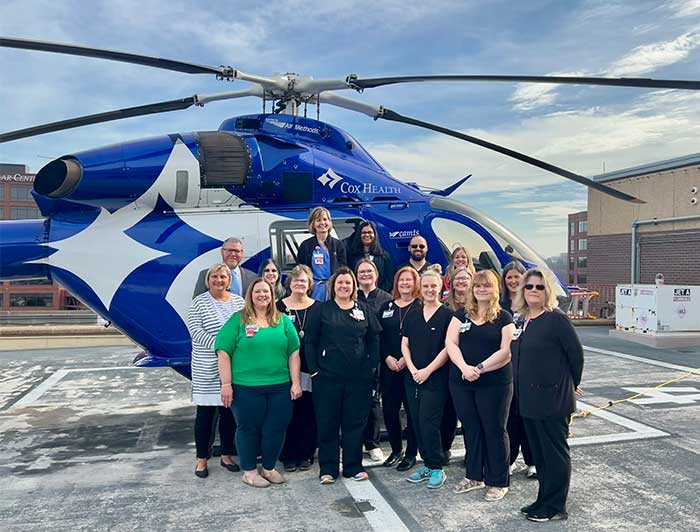
CoxHealth Hospital
Safety and Injury Prevention
CoxHealth offers innovative educational outreach programs focused on injury prevention in the community, school and workplace. These programs, which include safety measures related to poison, guns, biking, fires, water, driving and more, span from elementary school students to high schoolers and beyond and are available at no cost.
Children’s Mercy Hospital
Safety, Care & Nurturing (SCAN) program
Mercy collaborates with social workers and government agencies to develop novel prevention and therapy programs. The Safety, Care & Nurturing (SCAN) program includes specially trained pediatric and adolescent sexual assault nurse examiners for expert forensic and medical care.
Montana
Providence St. Joseph Medical Center
Certified Safe Sleep Center
Providence St. Joseph Medical Center is committed to eliminating sleep-related deaths by helping prevent sudden infant death syndrome (SIDS). A specially designed program emphasizes the need to create a safe sleep environment by placing a baby on its back to sleep and following health care guidance for vaccines, breastfeeding and skin-to-skin contact.
Nevada

Tahoe Forest Health System
STEEEP Framework
Throughout the Tahoe Forest Hospital District, the system has adopted the Institute of Medicine’s ‘STEEEP’ framework to deliver quality care. Following the framework, staff and facilities are focused on providing care that is Safe, Timely, Effective, Efficient, Equitable, and Patient-centered. The Tahoe Forest team is focused on reducing surgical site infections and sepsis, improving Emergency Department Transfer Communication (EDTC), and more to strengthen patient safety.
New Hampshire
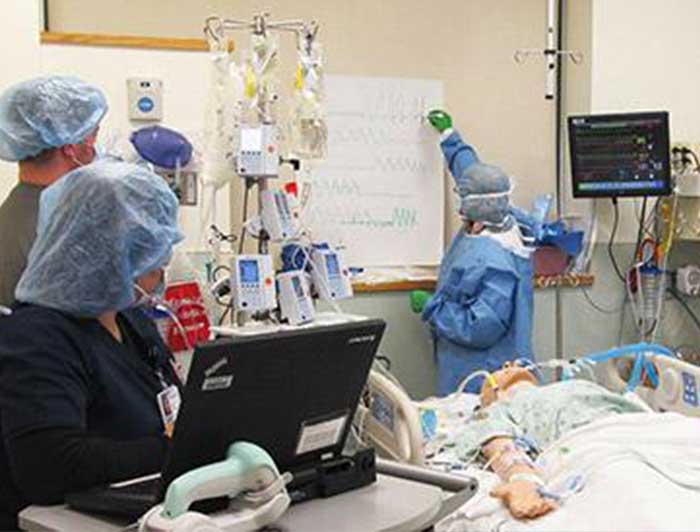
Dartmouth Hitchcock Medical Center
Patient Safety Training Center Programs
As part of the Patient Safety Training Center, Dartmouth Health’s Dartmouth Hitchcock Medical Center incorporates innovative Simulation-Based Education and Research (SBER) for clinical skills and task training, competency development and scenario-based training. In using these simulation education tools, health care professionals acquire technical proficiency, knowledge, confidence, appropriate attitudes and team skills to continue the journey to safer practice and excellence in patient care.
New Jersey
Trinitas Regional Medical Center
Operation SAFE Program
Trinitas Regional Medical Center has rolled out a program addressing the potential anxiety children and families may face before a patient or loved one undergoes surgery. Trinitas provides a supportive and friendly environment through their Operation SAFE (Supportive and Friendly Environment) Program. The program allows for pre-op tours of the hospital, an operating room holding area for parents, and enables parents to play an active role in the operation prep process.
New York
NewYork-Presbyterian
Centralized Approach to Patient Safety
As one of the nation’s largest, most comprehensive academic healthcare systems, NewYork-Presbyterian leverages a centralized quality and patient safety team to support all departments, who are accountable for quality and patient safety, across each of its 10 campuses. This allows for more efficient sharing of learnings and implementation of best practices that aligns all locations to a single standard of exceptional care. Anchored by two medical schools, Columbia and Weill Cornell Medicine, NewYork-Presbyterian is also dedicated to training the next generation of quality and patient safety leaders, offering focused fellowships in these areas.
North Carolina
UNC Health
Health Quality Expo
UNC Health’s Annual Quality Expo showcases performance improvement initiatives across the organization, providing departments an opportunity to share their success stories. Over the past two years, each expo featured more than 100 poster presentations. In 2023, the Anesthesiology Department won the “Collaboration Is Key” award for its “Code OR Root Cause Analysis” project, which focused on improving communication between six separate teams including Carolina Air Care.
Ohio
Summa Health
I'm 4 Safety
With the aim of providing safe and reliable care to patients, Summa Health and its medical staff have partnered to implement the “I’m 4 Safety” training program, bringing successful practices from other highly complex industries like aviation into their everyday health care operations. In addition to an initial comprehensive course, most Summa Health staff members are required to participate in a renewal course every two years, ensuring that they remain up to date on the most sophisticated safety protocols.
Oregon

Columbia Memorial Hospital
Safety Huddles and High Reliability Organization (HRO)
Each morning, teams across Columbia Memorial Hospital meet in front of their Safety Huddle Board to review safety statistics and the day’s top issues. The teams look ahead to discuss the day’s expected patients and projects as well as review previous cases to see if any improvements can be made to keep both patients and caregivers safe. Unit leaders start shifts this way to ensure that each team is keenly focused on patient and clinician safety. These processes are part of CMH becoming a High Reliability Organization (HRO), building upon the hospital’s commitment to patients to cultivate a safe environment for care and healing.
Pennsylvania
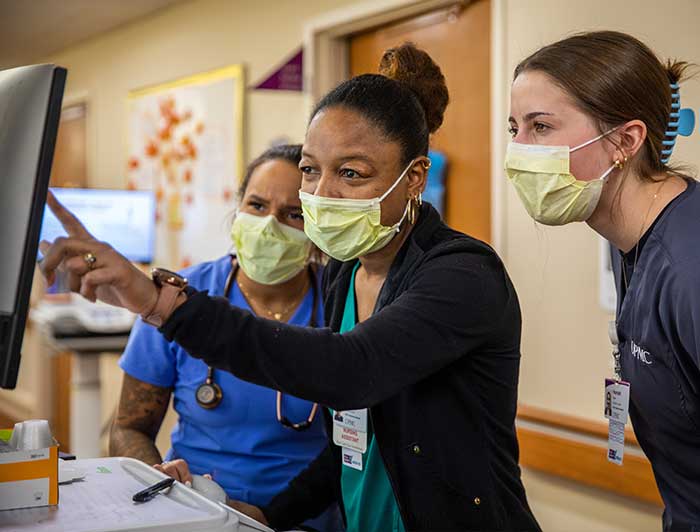
University of Pittsburgh Medical Center
Infection Prevention CAUTI
The University of Pittsburgh Medical Center launched a program to reduce or eliminate the number of infections acquired during a hospital stay. Infections caused by urinary catheters are among the most common infections caused by a medical device while a patient is in the hospital. UPMC takes many steps to prevent CAUTIs, including only using urinary catheters when necessary, allowing only nurses and well-trained staff who have been taught sterile techniques to insert and remove catheters, as well as having caregivers wash their hands and wear gloves when working with the catheter.
South Carolina
MUSC Health
Just Culture
MUSC Health has achieved remarkable results since instituting a “Just Culture,” or an environment where open reporting of things that are wrong, unsafe or inefficient can be done without fear of major repercussions. Since MUSC put this culture into place a decade ago, they have seen remarkable results. In 2023, MUSC’s reported harm rate (such as medication errors, surgical mistakes and preventable patient falls) was 2.5%, meaning very few incidences resulted in actual harm. With this culture in place, MUSC can quickly identify problems and address issues quickly and efficiently resulting in a positive outcome.
Texas
Memorial Hermann
Evidence-based Quality Measures to Prevent the Spread of Infections
With 6,600 affiliated physicians and more than 34,000 employees, Memorial Hermann practices the highest standards of safe, evidence-based, quality care to provide a personalized and outcome-oriented experience across our more than 250 care delivery sites. As one of the largest not-for-profit health systems in Southeast Texas, Memorial Hermann has an award-winning and nationally acclaimed Accountable Care Organization, 17 hospitals and numerous specialty programs and services conveniently located throughout the Greater Houston area. Memorial Hermann embraces a culture of patient safety which reflects in its status as a high-reliability organization (HRO). For over 118 years, our commitment has been to serve the best interests of our community. Now and into the future, we will continue to prioritize the highest standards of safe and quality care, ensuring that our patients remain at the heart of everything we do.
South Dakota
Sanford Health
Accountability for Excellence
Sanford Health’s safety program aims to eliminate preventable harm. Everyone is responsible for ensuring safety, not just those who provide direct care to patients. By standardizing training for every single employee, there’s been a change in culture and practice where staff have a shared language and commitment to identifying, reporting, and addressing actual and potential safety events. Through this program, Sanford Health noted a 57% reduction in its serious safety event rate thus far.
Virginia
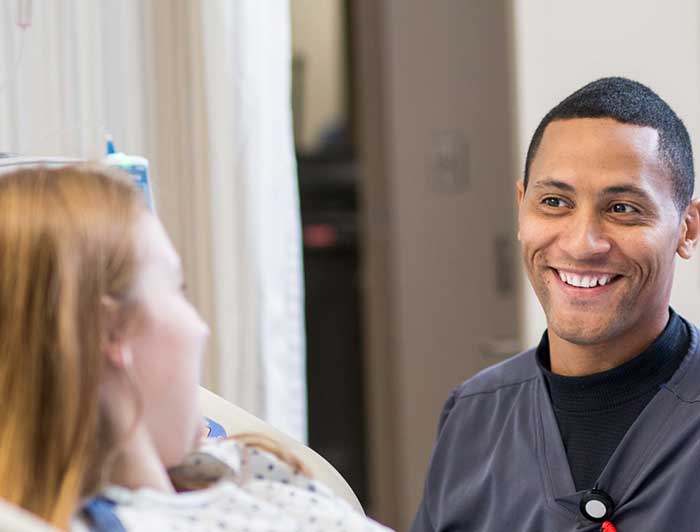
Carilion Clinic
Using Data to Drive Mortality Rate Improvements
The Roanoke-based hospital saw an opportunity to address mortality outcomes in 2022 and created a real-time mortality review system. The hospital’s leadership gathers weekly to discuss current data, trends and patterns in outcomes to quickly identify areas for investment and improvement. Within two years of establishing this process, Carilion’s mortality rate has improved by more than 50% – remarkable progress over an already high benchmark. These significant achievements led to Carilion Clinic being named a finalist for AHA’s Quest for Quality Prize in 2024.

Mary Washington Healthcare
Unified Quality Governance Drives Incredible Improvements
When leaders at Mary Washington Healthcare realized it wasn’t scoring as high it would like on safety and quality measures, they instituted a unified Quality Governance structure to coordinate all efforts within the organization. Projects related to health care-associated infections, patient safety indicators, readmissions, mortality, and NTSV C-sections were integrated into the framework. Physicians were assigned to oversee or “own” the projects. This approach enabled Mary Washington Healthcare to formulate improvement plans with multidisciplinary input, streamline work requests and establish clear lines of accountability. As a result, it significantly improved its performance in preventing infections, mortality and readmissions.
Washington
Virginia Mason Franciscan Health System
Evidence-based practice improvements strengthen a culture of safety
Virginia Mason Franciscan Health considers each of its 5,000 staff members to be "safety inspectors" responsible for detecting and preventing potential medical errors before they occur. Each employee completes mistake-proofing training, which empowers them to identify and raise any patient-safety related issues, including hospital-acquired infections. This culture empowers employees to call attention to potential mistakes, without fear of blame or retaliation. As part of its efforts to eliminate avoidable death and injury in its facilities, Virginia Mason Franciscan Health also implements evidence-based practice improvements in 12 clinical areas to continually up the bar on patient safety.
Wisconsin

Aurora Medical Center - Manitowoc County, Two Rivers
Implementing a Visual Management Board System to Improve Patient Safety
Located in a largely rural county that abuts Lake Michigan, Aurora Medical Center - Manitowoc County, Two Rivers is a cornerstone of the community. The hospital’s patient care units hold regular huddles to discuss ways to improve patient care, quality, and provide other necessary information. An organizational review of huddle practices showed opportunity for standardized huddle practices to consistently promote sensitivity to operations, situational awareness of current concerns and problem resolution. To improve, local hospital leadership standardized the process and implemented a visual management board. As a result, care teams now hold shorter, more efficient huddles at the start of every shift to discuss the unit’s daily goals with the opportunity to customize the discussion based on patient and department need.
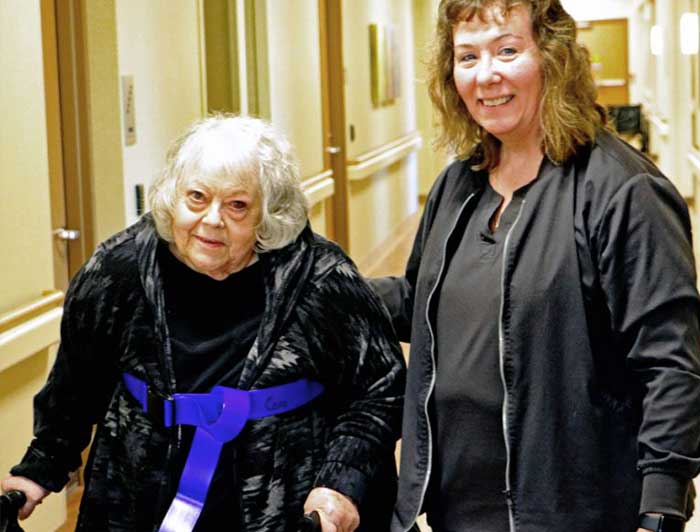
Tomah Health
Preventing Falls Is Vital
Preventing falls is vital to keeping hospitalized patients safe. To help avoid debilitating falls—which are more likely to occur after a period of prolonged bedrest––Tomah Health implemented the Wisconsin Hospital Association’s Mobilizing Older adults Via a systems-based Intervention (MOVIN)® program. By working with patients to set mobility goals and incorporating ambulation into each patient’s care plan, the MOVIN program helps individuals regain strength, prevent injuries, and ease the transition out of the hospital and back into the community.
District of Columbia (D.C.)
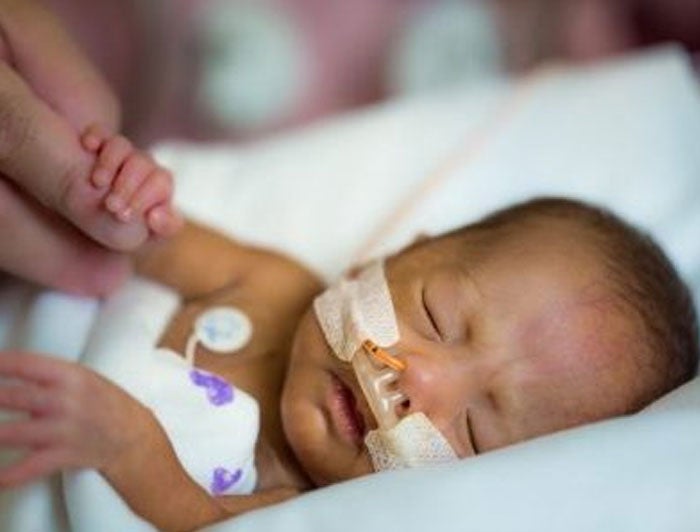
Children's National Hospital
Reducing Vancomycin Use in the Neonatal Intensive Care Unit (NICU)
Children’s National Hospital is pioneering a program to reduce the use of the antibiotic vancomycin in the neonatal intensive care unit (NICU). The assembled multidisciplinary team decreased vancomycin use in the NICU by 60% and recorded no episodes of vancomycin-associated kidney injury in the NICU. The team developed and implemented several interventions, including standardizing the hospital’s approach to treating several types of infections, integrating pharmacists into the antibiotic review process and educating clinicians on antibiotic use. As an added benefit of the program, the use of other antibiotics in the NICU also declined by about 20%.

